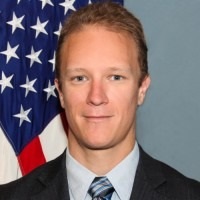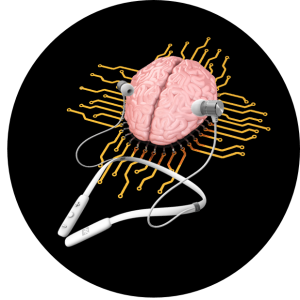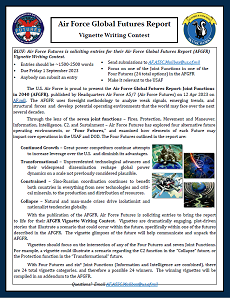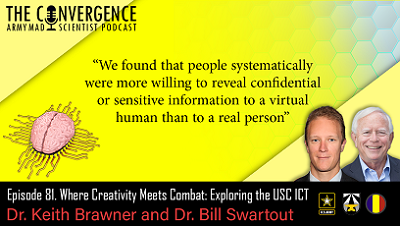“We found that people systematically were more willing to reveal confidential or sensitive information to a virtual human than to a real person”
[Editor’s Note: Artificial Intelligence (AI) is an emerging game-changer technology for our Warfighters — as Dr. James Mancillas espoused in a previous post, “AI systems offer the potential to continue maximizing the advantages of information superiority, while overcoming limits in human cognitive abilities.” Former Deputy Secretary of Defense Bob Work stated at the Mad Scientist Disruption and the Operational Environment Conference, co-sponsored by The University of Texas at Austin in 2019, that  this is an “Own the Night Moment for the United States Army” — the Army (and TRADOC) must embrace and rapidly incorporate AI across the force.
this is an “Own the Night Moment for the United States Army” — the Army (and TRADOC) must embrace and rapidly incorporate AI across the force.
One such AI application is enhancing Army learning and training. The Army will not only have to incorporate AI as a subject in its Professional Military Education (PME) — ensuring our Soldiers and Leaders have the requisite AI literacy — it has the opportunity to utilize AI in augmenting Field Training Exercises, Home Station Training, and Combat Training Center rotations to expose and prepare our Warfighters for the second and third order effects resulting from the compressed battle rhythms wrought by AI.
In today’s episode of The Convergence podcast, we interview Drs. Keith Brawner and Bill Swartout from the University of Southern California’s Institute for Creative Technologies (USC ICT) — a DoD-sponsored University Affiliated Research Center (UARC) focused on immersive technology, simulation, human performance, computer graphics, AI, and narrative — about the Center for Generative AI and Society within ICT, their research into large language models, and their vision of the future of training through emerging technologies. Enjoy!]
[If the podcast dashboard is not rendering correctly for you, please click here to listen to the podcast.]
 Dr. Keith Brawner is the Program Manager of the Institute for Creative Technologies University Affiliated Research Center (ICT UARC) for the Undersecretary of Defense for Research and Engineering, as managed by the U.S. Army DEVCOM Soldier Center, where he is also the lead for AI initiatives. He is a research leader in intelligent tutoring systems with over 100 publications in research/ application of simulation and training technologies.
Dr. Keith Brawner is the Program Manager of the Institute for Creative Technologies University Affiliated Research Center (ICT UARC) for the Undersecretary of Defense for Research and Engineering, as managed by the U.S. Army DEVCOM Soldier Center, where he is also the lead for AI initiatives. He is a research leader in intelligent tutoring systems with over 100 publications in research/ application of simulation and training technologies.
While he manages the ICT at the University of Southern California, he works at the SFC Paul Ray Smith Simulation and Training Technology facility in Orlando, Florida. He has worked on, or contributed to, systems which train land navigation, marksmanship, hovercraft operation, destroyer decision making, physics, UAV route planning, calling for indirect fires, submarine harbor navigation, sonar system operation, helicopter flight, counterinsurgency, and many others. His current research focus is on enhancing simulations, the realism within simulations, the behaviors of simulated characters, and the creation of human behavior change. He earned a BS in Electrical Engineering from the University of Central Florida. He earned an MS and Ph.D in Computer Engineering while working full-time for the Navy (Naval Air Warfare Center Training Systems Division) and Army (Army Research Laboratory), respectively. He is the recipient of the National Training and Simulation Association Governors award (2nd highest honor) and the UCF Alumni 30 under 30 award.
 Dr. William Swartout is a research professor in the Computer Science Department at the USC Viterbi School of Engineering and Chief Technology Officer at the USC Institute for Creative Technologies, providing overall direction to the institute’s research. Dr. Swartout was also recently named Co-Director of USC’s Center for Generative AI and Society. In 2009, he received the Robert Engelmore Award from the Association for the Advancement of Artificial Intelligence (AAAI) for seminal contributions to knowledge-based systems and explanation, groundbreaking research on virtual human technologies and their applications, and outstanding service to the AI community.
Dr. William Swartout is a research professor in the Computer Science Department at the USC Viterbi School of Engineering and Chief Technology Officer at the USC Institute for Creative Technologies, providing overall direction to the institute’s research. Dr. Swartout was also recently named Co-Director of USC’s Center for Generative AI and Society. In 2009, he received the Robert Engelmore Award from the Association for the Advancement of Artificial Intelligence (AAAI) for seminal contributions to knowledge-based systems and explanation, groundbreaking research on virtual human technologies and their applications, and outstanding service to the AI community.
Dr. Swartout is a Fellow of the AAAI, has served on their Board of Councilors, and is past chair of the Special Interest Group on Artificial Intelligence (SIGART) of the Association for Computing Machinery (ACM). He has served as a member of the Air Force Scientific Advisory Board, the Board on Army Science and Technology of the National Academies, and the JFCOM Transformation Advisory Group. Prior to helping found the ICT in 1999, he was the Director of the Intelligent Systems Division at the USC Information Sciences Institute. Dr. Swartout received his Ph.D and MS in Computer Science from MIT and his bachelor’s degree from Stanford University. He has been involved in cutting edge research and development of AI systems throughout his career.
In this latest episode of The Convergence podcast, we sit down with Drs. Keith Brawner and Bill Swartout from the University of Southern California’s Institute for Creative Technologies (USC ICT) to talk about the Center for Generative AI and Society within ICT, their research into large language models, and their vision of the future of training through emerging technologies. The following bullet points highlight key insights from our conversation:
-
-
 The Institute for Creative Technologies within the University of Southern California was formed in 1999 as the DoD took notice of significant advancements in video game technology. The simulations from the commercial video game industry were outpacing those developed by the military and doing so at a lower price point. ICT was established to create a closer relationship between the DoD and the entertainment industry to leverage those tools, ideas, creativity, and resources.
The Institute for Creative Technologies within the University of Southern California was formed in 1999 as the DoD took notice of significant advancements in video game technology. The simulations from the commercial video game industry were outpacing those developed by the military and doing so at a lower price point. ICT was established to create a closer relationship between the DoD and the entertainment industry to leverage those tools, ideas, creativity, and resources.
-
-
-
- The Center for Generative AI and Society is a newly formed research organization within USC that endeavors to explore the impact that generative AI and related fields have on society and how we can best use these emerging technologies to advance humanity. Dr. Swartout’s research focuses on generative AI and education – viewing this technology as a tool similar to the advent of the calculator.
 Education in the future will use generative AI for research and writing, with students’ evaluations being based on the entire process vice solely their end product.
Education in the future will use generative AI for research and writing, with students’ evaluations being based on the entire process vice solely their end product.
- The Center for Generative AI and Society is a newly formed research organization within USC that endeavors to explore the impact that generative AI and related fields have on society and how we can best use these emerging technologies to advance humanity. Dr. Swartout’s research focuses on generative AI and education – viewing this technology as a tool similar to the advent of the calculator.
-
-
-
- AI is widely viewed as one of the things that will help us sustain overmatch over our near peer adversaries, but most people in the general workforce know very little about it. There is a very real need for increased AI literacy not only for AI programmers but for those who are going to be managing AI systems.
-
-
-
 Research at ICT has shown that people respond to virtual humans in much the same way that they respond to real people but there are some key differences. People felt safer and more comfortable revealing sensitive information to a virtual human.
Research at ICT has shown that people respond to virtual humans in much the same way that they respond to real people but there are some key differences. People felt safer and more comfortable revealing sensitive information to a virtual human.
-
-
-
- Training, education, and Leader development in the military will have to adapt. The key skills taught will remain enduring, however the method of consumption, instruction, and delivery will continue to change, as it has across the ages — from clay tablets, to books, to online videos. Future PME may consist of computer-generated customized learning paths tested on simulated students with on-demand learning content.
-

Stay tuned to the Mad Scientist Laboratory for our next episode of The Convergence on 27 July 2023, when we’ll interview LtCol Joe Buffamante, USMC, about human-machine teaming, leveraging large language models as effective learning support tools, and establishing and maintaining trust with your personal AI assistant.
If you enjoyed this post, check out the following content:
Chatty Cathy, Open the Pod Bay Doors: An Interview with ChatGPT and associated podcast
Artificial Intelligence: An Emerging Game-changer
Takeaways Learned about the Future of the AI Battlefield and associated information paper
The Guy Behind the Guy: AI as the Indispensable Marshal, by Brady Moore and Chris Sauceda
Integrating Artificial Intelligence into Military Operations, by Dr. James Mancillas
“Own the Night” and the associated Modern War Institute podcast with proclaimed Mad Scientist Bob Work
Achieving an AI-era Workforce by 2025: A Modern, Scalable Approach to Retooling the United States (and its Army!) by Ted Hallum
The Language of AI and associated podcast, with Michael Kanaan
AI Across the Enterprise and associated podcast, with Rob Albritton
Bringing AI to the Joint Force and associated podcast, with Jacqueline Tame, Alka Patel, and Dr. Jane Pinelis
AI Enhancing EI in War, by MAJ Vincent Dueñas
The Human Targeting Solution: An AI Story by CW3 Jesse R. Crifasi
An Appropriate Level of Trust…
>>>>REMINDER: AFGFR Vignette Writing Contest — Our Sister Service partners in the U.S. Air Force (USAF) are proud to present the Air Force Global Futures Report: Joint Functions in 2040, published by Headquarters Air Force A5/7 (aka Air Force Futures). This report is the USAF’s analogue to the U.S. Army Futures Command’s AFC Pamphlet 525-2, Future Operational Environment: Forging the Future in an Uncertain World 2035-2050.
The AFGFR highlights four future operating environments and major implications for the future force. To bring these operating environments to life, Army Mad Scientist is partnering with the Air Force Futures’ Foresight Team to conduct the AFGFR Vignette Writing Contest — based on the report’s four futures and the exploration of the Joint Functions. We are seeking vignettes with characters that make the future operating environments and associated  Joint Functions within come to life!
Joint Functions within come to life!
The AFGFR Vignette Writing Contest is open to all — anyone can submit an entry. Entries should be between 1500-2500 words in length, and are due NLT 01 September 2023. To learn more about the contest and how to submit your entry(ies), click >>>> here <<<< and read the contest flyer!
Disclaimer: The views expressed in this blog post do not necessarily reflect those of the U.S. Department of Defense, Department of the Army, Army Futures Command (AFC), or Training and Doctrine Command (TRADOC).



